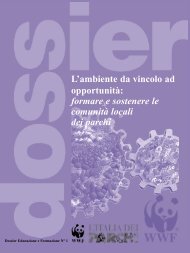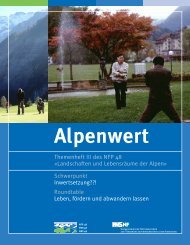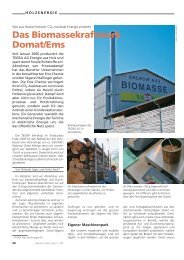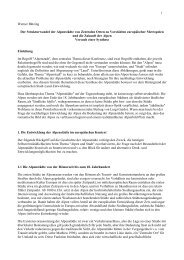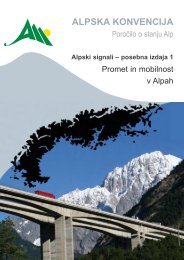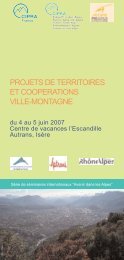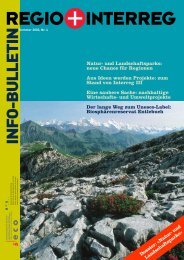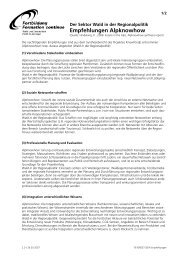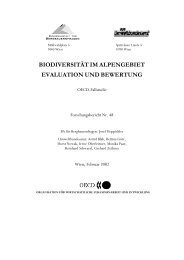English - Alps Know-How - Cipra
English - Alps Know-How - Cipra
English - Alps Know-How - Cipra
You also want an ePaper? Increase the reach of your titles
YUMPU automatically turns print PDFs into web optimized ePapers that Google loves.
Chapter A – The Alpine Transport System<br />
Map A1-4: Density of rail network in relation to population (on NUTS-3 level).<br />
A1.3.2 Extension and improvement plans<br />
All Alpine countries aim to improve rail passenger and freight<br />
transport and to increase the share of rail transport.<br />
The existing conventional lines are mainly covered by plans<br />
for optimising them in public-private partnerships between<br />
states and railway operators. The following major extension<br />
and improvement schemes exist for the Alpine railway<br />
system (Alpenkonvention 2006):<br />
Lyon-Turin (LTF)<br />
The Franco-Italian cross-border base tunnel project foresees<br />
a base tunnel of 52 km length establishing a competitive rail<br />
transport link on this important western Alpine corridor. Construction<br />
costs for the whole project of 73 km, including the<br />
cross border tunnel, are calculated at 7 billion EUR and the<br />
tunnel is scheduled to be opened in 2020. The Lyon–Turin<br />
Project constitutes one of the major Alpine transport infrastructure<br />
projects for the next decade both for passenger and<br />
goods transport.<br />
Plan Maurienne Corridor (Aiton – Orbassano rail motorway)<br />
Since November 2003, as an experiment, France and Italy<br />
have operated an Alpine rail motorway between Aiton and<br />
Orbassano, which runs under strict constraints since the historic<br />
Mont Cenis tunnel is not built to the European B1 standard<br />
facilitating the transport of most HDV on piggyback. Use<br />
of this experimental Alpine rail motorway is therefore limited<br />
to tanker traffic only until the tunnel modernising work is completed<br />
(2008), but it made dramatic progress in 2004 and<br />
2005, in particular when the Fréjus tunnel road was closed<br />
on 4 June 2005. For the first time, a rail alternative has been<br />
possible for this corridor, particularly for hazardous materials<br />
(doubling of traffic between June and July, leading to 530<br />
HDV/week).<br />
Brenner 2005<br />
The following essential results were achieved during the first<br />
18 months of project work:<br />
For the core section of the Brenner corridor between<br />
München and Verona, the three rail network operators German<br />
Railway Net (DB Netz), Austrian Railway Net (ÖBB<br />
Netz) and Italian Federal Railway (RFI) have developed socalled<br />
catalogue train paths.<br />
In 2004, the Milano-Segrate terminal which is directly connected<br />
with München-Riem by a train link was established as<br />
a new gateway terminal for the Brenner corridor.<br />
Finally, the BRAVO partners Kombiverkehr, Ferriere Cattaneo<br />
and Combined Transport Management and Transportation<br />
S.p.A. (CEMAT) have developed a new high-capacity<br />
pocket wagon. The Federal Railway Office has approved this<br />
wagon so that in the first half of 2006 the first series of pocket<br />
wagons can be put into service.<br />
The Brenner action plan 2005 and BRAVO have contributed<br />
to the increase in the traffic volume of unaccompanied combined<br />
services between Germany and Italy.<br />
17



